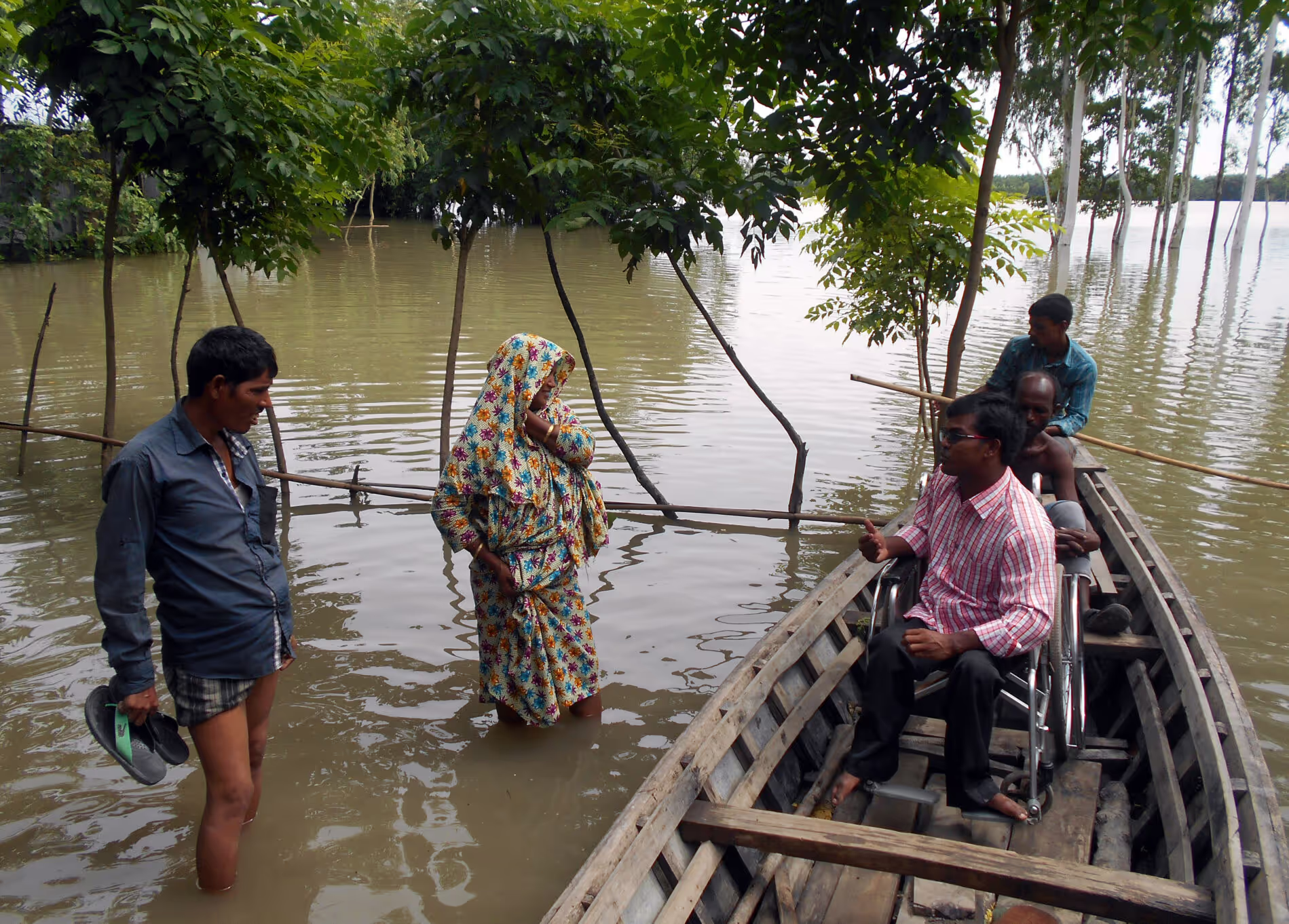Messaging for Inclusion: Co-creating disability and age inclusive disaster preparedness messaging in Bangladesh

Project overview
People with disabilities and older persons are disproportionately vulnerable to natural disasters, but communications about disasters are not designed with them in mind. Leonard Cheshire’s research will identify and co-produce ways to close that gap in some of the world’s most at-risk areas.
Project solution
This project offers [specific solution or intervention] to tackle [challenge]. By implementing [strategies, tools, or innovations], the project aims to achieve [desired outcomes]. The approach is designed to [specific actions or methods] to bring about meaningful change in [community, region, or issue area].
Expected outcomes
This project aims to achieve [specific outcomes], such as [measurable results, improvements, or changes]. The expected impact includes [benefits to the target community, advancements in research or innovation, or long-term effects]. By the end of the project, we anticipate [specific changes or milestones] that will contribute to [broader goals or objectives].
WHAT HUMANITARIAN NEED IS BEING ADDRESSED?
When preparing for disasters, national governments and humanitarian organisations often don’t consider how to communicate effectively with people with disabilities and older people. This means that these groups are often not able to access the information they need about being prepared for disasters, including natural disasters such as flooding. Worse, it may mean that they do not know how to respond during an emergency. This is especially crucial in areas vulnerable to natural disasters like flooding, such as Bangladesh.
WHAT IS THE INNOVATIVE SOLUTION AND HOW WILL IT IMPROVE EXISTING HUMANITARIAN PRACTICE?
Leonard Cheshire will research the experiences of people with disabilities and older people in disaster-prone areas. It will involve them in every stage of research: planning, data collection, and dissemination. In particular, the organisation will use Photovoice methodology, which will train a small group of participants to use photos (or other creative means like drawings) to explain their experience of living in a disaster-prone area and what they see as inclusive and effective ways of communicating.
Using the evidence they gather, participants will help to create inclusive messaging on preparedness for disasters. This will feed into a toolkit for authorities to use to communicate about disasters in a more inclusive way. In sum, the approach means that solutions to disaster risk reduction are designed by the people it needs to reach.
EXPECTED OUTCOMES
Project outputs will include a toolkit, briefings, an open-access academic article and webinars
Leonard Cheshire’s research will show how people with disabilities, and older people, in Kurigram district perceive disaster-related messaging, and also uncover what they see as the barriers to accessing these messages. It also aims to answer the question of how disaster-related messaging can be made accessible in Kurigram District, and how it can be made more effective in terms of reaching people with disabilities and older people.
A key principle of this research is that making the evidence-gathering process inclusive (i.e. fully involving people with disabilities and older people) which will underpin stronger outcomes overall. Therefore, Leonard Cheshire will capture data on the process of doing the research throughout the project (e.g. recording dialogues between stakeholders at project learning workshops).
Project delivery & updates
Stay up to date with the latest developments from this project. Here, you will find details on what has been delivered, resources created, and regular updates as the project progresses. Access key documents, reports, and other materials to see how the project is making an impact.
Resources
Guidance
LEARN MORE